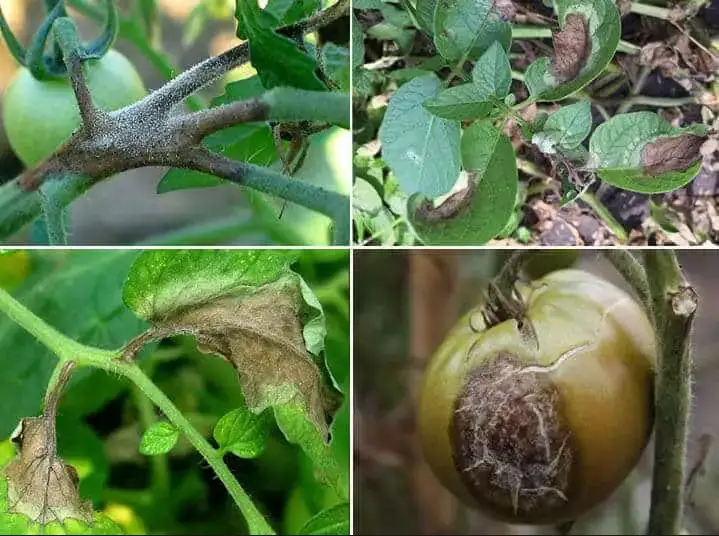Potato crops worldwide are afflicted by numerous diseases, among which early blight and late blight hold significant prominence due to their impact on yield and quality. These diseases, caused by different pathogens, manifest distinct symptoms and have separate cycles of development and spread. Recognizing the differences between these two blights is crucial for effective disease management and prevention strategies, ensuring the sustainability of potato production.
Early blight and late blight of potatoes are distinguished primarily by their causal pathogens, symptomology, and environmental conditions favoring their development. Early blight, caused by the fungus Alternaria solani, is characterized by concentric rings on older leaves, resembling a target. In contrast, late blight, attributable to the oomycete Phytophthora infestans, presents as irregular, water-soaked lesions on leaves and stems, rapidly leading to plant decay under wet conditions.
Understanding these diseases extends beyond identifying symptoms; it encompasses an awareness of the conditions under which each disease thrives and the best practices for management. Early blight favors warm, dry conditions and is managed through fungicide application and cultural practices, while late blight proliferates in cooler, moist environments, requiring diligent preventive measures and the use of resistant varieties for control. Accurate identification and targeted action can markedly reduce the losses attributed to these diseases.
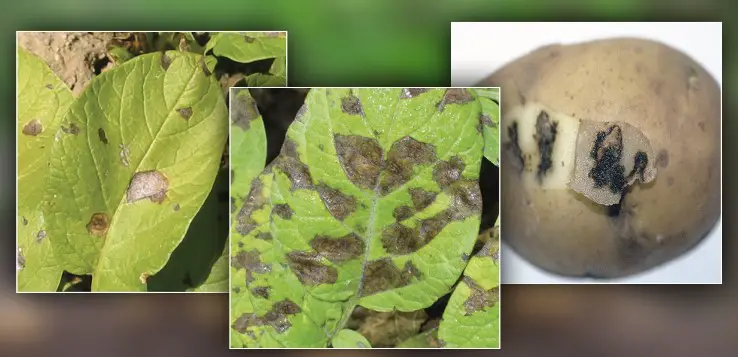
Early Blight in Potatoes
Symptoms
Appearance of Lesions
Early blight is marked by the appearance of small, dark spots on the leaves of the potato plants. These spots gradually expand into larger circles, often with a target-like pattern of concentric rings. The lesions may also have a yellowish halo around them, indicating the area of leaf tissue affected by the disease.
Pattern and Progression
The progression of early blight is quite distinctive. Initially, the lesions are small but as the disease advances, they increase in size. If left unchecked, these lesions can lead to significant leaf damage, reducing the plant’s ability to photosynthesize effectively. This progression usually follows a period of warm, dry conditions, which are optimal for the development of the fungus.
Causes
Fungus Responsible
Early blight is caused by the fungus Alternaria solani. This pathogen can survive in soil and plant debris, making it a recurring threat to potato crops. The spores of the fungus are spread by wind and water, infecting new plants and leading to the outbreak of the disease.
Environmental Conditions
The development of early blight is heavily influenced by environmental conditions. Warm temperatures (between 75°F and 85°F) combined with high humidity create the perfect conditions for the spread of the fungus. The disease is more likely to occur when these conditions are met, especially when the plants are under stress from other factors such as drought or nutrient deficiency.
Management
Cultural Practices
Managing early blight involves several cultural practices aimed at reducing the risk of infection. These include:
- Crop rotation: Avoid planting potatoes in the same soil where early blight was previously observed.
- Debris management: Remove and destroy infected plant debris to reduce the amount of fungal spores in the environment.
- Irrigation management: Water plants at the base to avoid wetting the foliage, which can promote fungal growth.
Chemical Controls
In addition to cultural practices, chemical controls can be effective in managing early blight. Fungicides can be applied at the first sign of disease or as a preventive measure during conditions favorable to the development of early blight. It is essential to follow the manufacturer’s recommendations for application rates and intervals.
Resistant Varieties
Developing and planting resistant varieties is a long-term strategy for managing early blight. Breeding efforts have focused on creating potato varieties that are less susceptible to the disease, offering an effective way to reduce its impact on the crop.
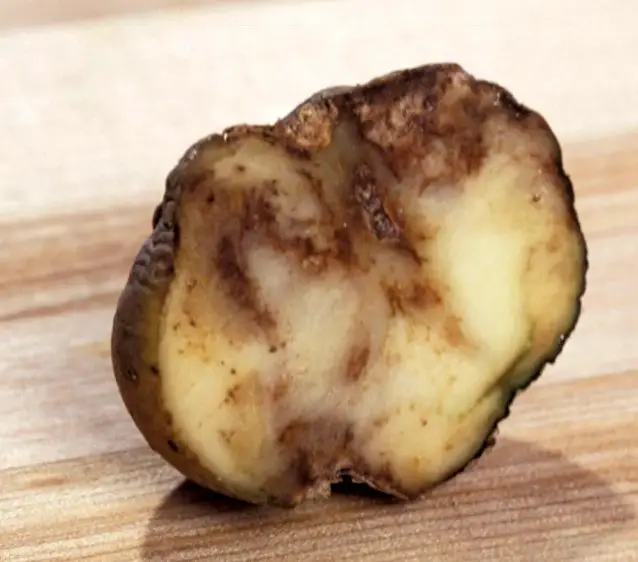
Late Blight in Potatoes
Symptoms
Initial Signs on Leaves and Stems
Late blight starts with water-soaked lesions on the leaves and stems, which quickly become large, dark, and oily in appearance. Unlike early blight, these lesions do not have a target-like pattern but are irregular in shape. The underside of the leaves may show a white, fluffy growth, especially in moist conditions.
Spread to Tubers
The pathogen can also infect the tubers, leading to soft, brown rot that can render the entire harvest unusable. This aspect of the disease is particularly devastating, as it not only affects the yield but also the storability of the potatoes.
Causes
Pathogen Identification
Late blight is caused by Phytophthora infestans, an oomycete that thrives in cool, wet conditions. Unlike Alternaria solani, this pathogen requires moisture for spore germination and infection, making late blight a common issue in regions with wet summers.
Favorable Weather Conditions
Late blight outbreaks are closely linked to weather conditions. The disease proliferates in temperatures ranging from 60°F to 70°F, especially when these temperatures are accompanied by high humidity or rain. Such conditions facilitate the spread of spores and increase the likelihood of infection.
Management
Preventive Measures
Preventing late blight involves a series of steps designed to minimize the chances of an outbreak:
- Monitor weather conditions: Stay informed about local weather forecasts and prepare to take action when conditions favor the development of late blight.
- Remove volunteers: Eliminate volunteer potatoes and other solanaceous plants that can harbor the pathogen.
- Use certified seed: Plant only certified seed potatoes that are free from the disease.
Fungicide Options
Fungicides play a crucial role in managing late blight, especially during periods of high risk. Effective fungicides for late blight include those with active ingredients that target Phytophthora infestans. Regular application following the onset of conducive weather conditions can significantly reduce disease severity.
Genetic Resistance
Similar to early blight, genetic resistance is a valuable tool in the fight against late blight. Some potato varieties have been bred for resistance to Phytophthora infestans, offering a sustainable approach to managing the disease. Choosing resistant varieties can greatly reduce the need for fungicide applications and other management practices.
By understanding the differences in symptoms, causes, and management strategies for early and late blight, potato growers can implement targeted approaches to protect their crops. While both diseases pose significant challenges, effective management practices can mitigate their impact, ensuring healthy and productive potato fields.

Comparison of Early Blight and Late Blight in Potatoes
Understanding the distinctions between early blight and late blight is critical for implementing effective management strategies. Both diseases significantly affect potato production but differ in their symptoms, causes, and the way they are managed. By comparing these aspects, growers can better identify and control the spread of these diseases in their crops.
Symptom Contrast
Visual Differences
Early blight manifests as dark, concentric circles on the leaves, often resembling a bullseye. This target-like appearance is a hallmark of the disease and typically occurs on older foliage first. In contrast, late blight symptoms include irregularly shaped, water-soaked lesions on leaves and stems that rapidly become large and dark. Unlike early blight, late blight lesions do not have a patterned appearance and can quickly envelop the entire plant.
Impact on Plant Health
The impact of these diseases on plant health also differs. Early blight primarily affects the plant’s ability to photosynthesize, gradually weakening it over time. On the other hand, late blight can cause rapid plant decay, leading to a sudden loss of the crop. Late blight’s effect is more immediate and devastating, often resulting in total crop failure if not managed promptly.
Causal Agents
Pathogen Comparison
Early blight is caused by the fungus Alternaria solani, which survives in soil and plant debris. Late blight, however, is caused by Phytophthora infestans, an oomycete that requires wet conditions to thrive and spread. These differing life forms mean that the diseases have unique characteristics and require different management approaches.
Lifecycle Differences
The lifecycle of the pathogens also varies. Alternaria solani spores are airborne and can infect plants under warm, relatively dry conditions. In contrast, Phytophthora infestans spreads through moist environments, with spores that can move through water. This difference significantly affects how and when the diseases spread, impacting the timing and type of management strategies employed.
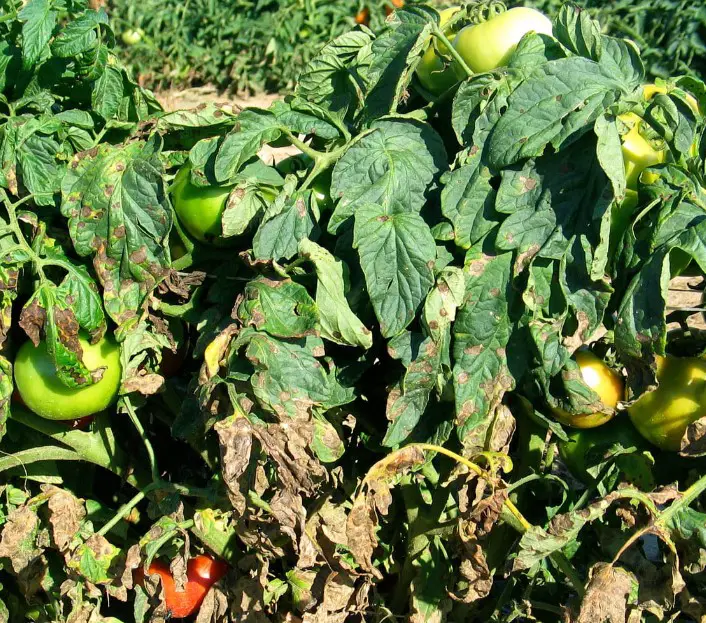
Management Strategies
Cultural Practices Variance
The variance in cultural practices for managing these diseases highlights their differences. For early blight, strategies include crop rotation and removing plant debris to reduce fungus spores. For late blight, growers might focus more on preventing the conditions that allow the disease to thrive, such as avoiding overhead irrigation and ensuring good air circulation among plants.
Chemical Treatment Differences
Chemical treatments also vary between the two diseases. Fungicides effective against Alternaria solani may not work on Phytophthora infestans, and vice versa. Timing and method of application can differ significantly, with late blight often requiring more aggressive and frequent applications to prevent the rapid spread of the disease.
Economic and Ecological Impact
Crop Loss
Both diseases can lead to significant crop loss, but the potential for damage varies. Early blight tends to reduce the yield and quality of the crop gradually, while late blight can destroy an entire field within days under favorable conditions. Estimations of loss vary by region and outbreak severity, but late blight is generally considered to have a more devastating economic impact due to its potential for rapid and widespread destruction.
Environmental Considerations
Impact of Fungicides
The reliance on fungicides for managing these diseases raises environmental concerns. The overuse of chemical treatments can lead to resistance in the pathogens and affect non-target organisms, contributing to biodiversity loss. It also poses a risk to water sources through runoff. Selecting the right fungicide and applying it judiciously is crucial to minimize environmental impact.
Sustainable Management
Sustainable management of early and late blight includes integrated pest management (IPM) strategies. IPM involves using a combination of biological, cultural, physical, and chemical tools in a way that minimizes economic, health, and environmental risks. This might include developing and planting resistant varieties, employing crop rotation and proper irrigation techniques, and using biological controls where possible. By adopting these practices, growers can help ensure the long-term sustainability of potato production.
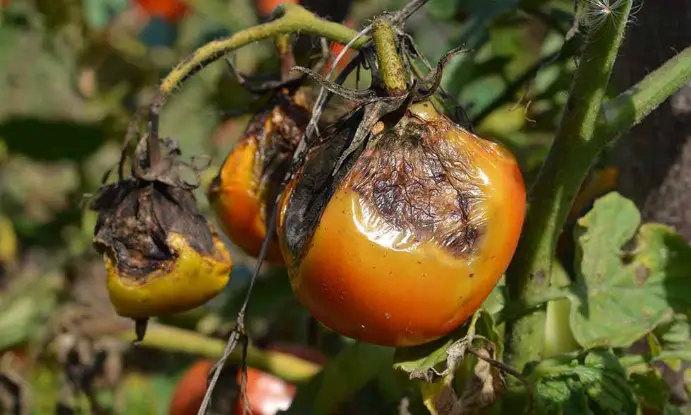
FAQs
What causes early blight in potatoes?
Early blight in potatoes is caused by the fungus Alternaria solani. It typically affects the foliage of the plant, creating dark, concentric rings on the leaves. The disease thrives in warm, dry climates and is exacerbated by insufficient nutrient management and compromised plant vigor.
How can you differentiate between early and late blight symptoms?
Early blight symptoms include small, dark spots on older leaves that expand into larger circles with a target-like appearance. Late blight, on the other hand, begins with water-soaked spots on leaves and stems that quickly enlarge and lead to a soft, rotting texture. The conditions under which each disease flourishes also help in their identification, with early blight favoring dryer conditions and late blight proliferating in cooler, moist environments.
Are there effective treatments for late blight?
Effective management of late blight involves an integrated approach, including the use of resistant potato varieties, timely application of fungicides, and adoption of cultural practices that reduce humidity around the plants. Since the pathogen can survive in infected tubers, it is also crucial to practice crop rotation and eliminate volunteer potatoes which can harbor the disease.
Can early and late blight affect the potato tubers?
Yes, both early and late blight can affect potato tubers. Early blight causes surface blemishes that do not significantly impact the tuber’s internal quality. Late blight, however, can penetrate deeper into the tuber, causing a soft rot that renders the potatoes inedible and unsuitable for storage.
Conclusion
Distinguishing between early and late blight in potatoes is more than an academic exercise; it is a critical component of effective crop management. These diseases, while similar in name, differ significantly in their symptoms, causative agents, and management strategies. Accurate diagnosis enables the implementation of targeted interventions, minimizing crop loss and ensuring the sustainable production of one of the world’s staple foods.
The battle against early and late blight is ongoing, requiring vigilance, continuous research, and the adoption of best practices by growers. By understanding the nuances of these diseases, the agricultural community can better protect potato crops, ensuring a stable and healthy food supply. This knowledge, coupled with advances in disease management, holds the promise of safeguarding potatoes against these pervasive diseases, preserving their role as a vital global food source.

